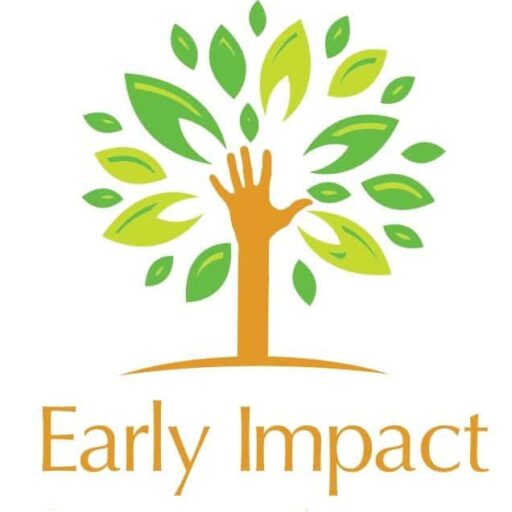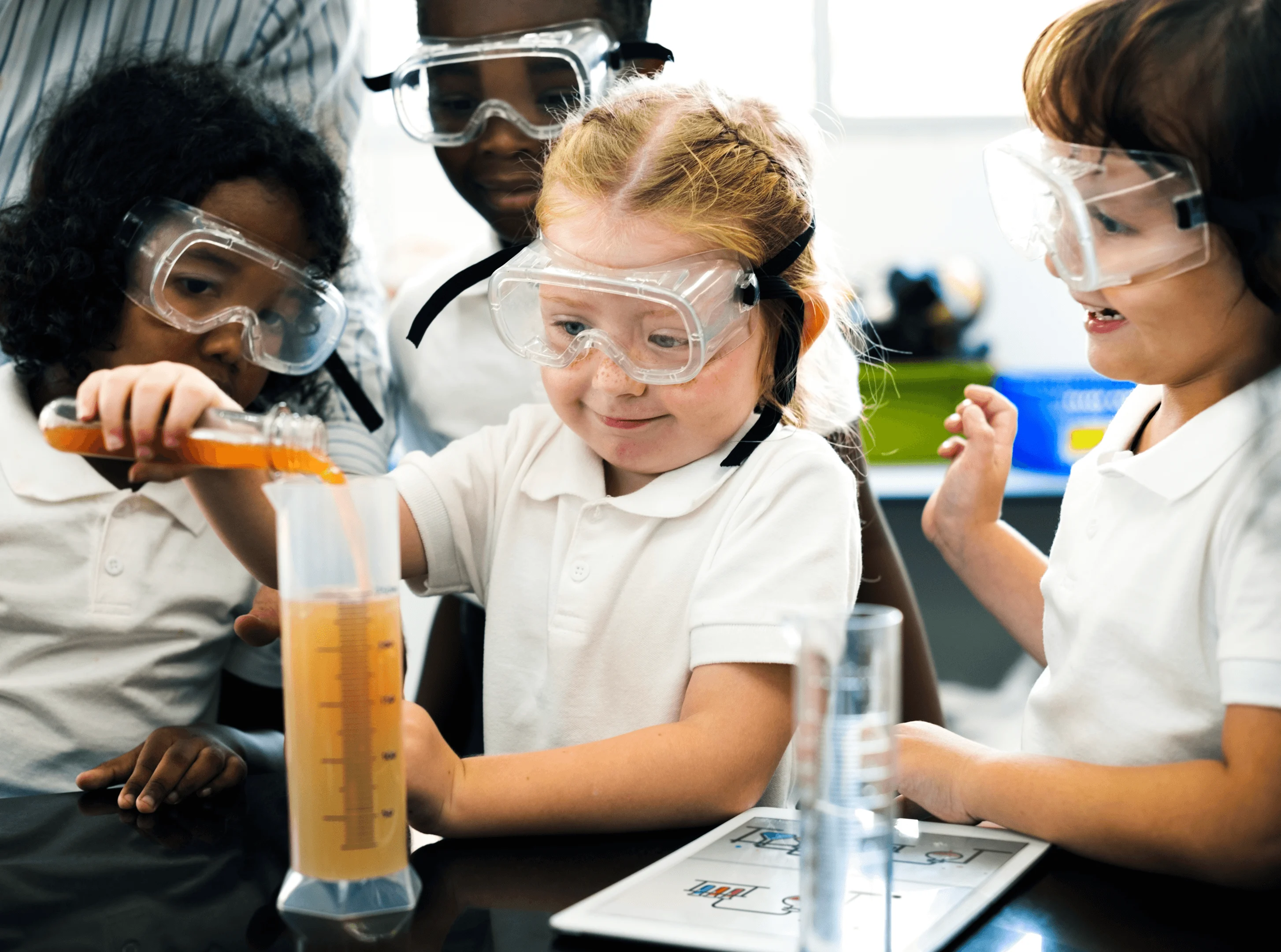
Introduction
Science education is essential to a child’s general development, starting from an early age.
Through preschool science experiments, parents and teachers are able to cultivate natural curiosity in toddlers, boost their cognitive development, and provide a solid basis for future learning.
Young kids gain a lot of intellectual, social, and emotional benefits from participating in science activities.
First of all, science experiments give them practical learning opportunities that engage their senses, inspire discovery, develop their fine motor skills, and aid in a deeper comprehension of various science concepts.
Secondly, when toddlers and preschoolers engage in science activities, they gain the ability to inquire, forecast, test hypotheses, and make conclusions.
These abilities improve their critical thinking, logical reasoning, and capacity for problem-solving, all of which are crucial abilities with benefits that extend beyond the field of science.
Additionally, when preschoolers work collaboratively on these easy science experiments, they develop teamwork, communication, and cooperation skills.
Having tested several science activities for toddlers over many years, we bring to you a collection of super simple, engaging and best science experiments kids love.
These safe, age-appropriate and easy-to-setup simple experiments have been carefully chosen; each accompanied by step-by-step instructions, explanations of the scientific concepts involved, and ideas for fostering further exploration.
Safety Precautions For Science Experiments
Before we discuss the various preschool science experiments, please note that the safety of kids is of paramount importance when engaging them in science activities.
Preschoolers are naturally curious and enjoy playing, but they do not fully understand the potential hazards associated with science experiments.
As such, it is crucial to always have an adult present throughout the experiment to closely monitor them and intervene when necessary.
Listed below are a few common hazards associated with science experiments for toddlers and how to address them:
Small objects
Avoid using small objects that kids could swallow or choke on. Rather, go for larger objects that are safe for their ages.
Chemicals
Choose chemicals that are labeled as non-toxic, child-safe, and age-appropriate. Avoid using any chemicals that could be harmful if ingested, inhaled, or come into contact with the skin.
Heat sources
Keep your little ones away from open flames, hot surfaces, hot water or any experiment involving heat. Use alternative methods that don’t involve heat or only require cold temperatures.
Sharp objects
Avoid using sharp tools or objects that could cause injury. Use child-friendly alternatives instead, such as plastic utensils or rounded-edge items.
Electricity
Totally avoid experiments that involve electricity to prevent the risk of electric shock. Focus on those that do not require electricity.
Once these safety precautions and measures are implemented, you are assured of a safe and secure environment that allows your preschoolers to have so much fun as they explore the wonders of science risk-free.
4 Favorite Science Activities for Toddlers
1. Sink or Float Science Experiment
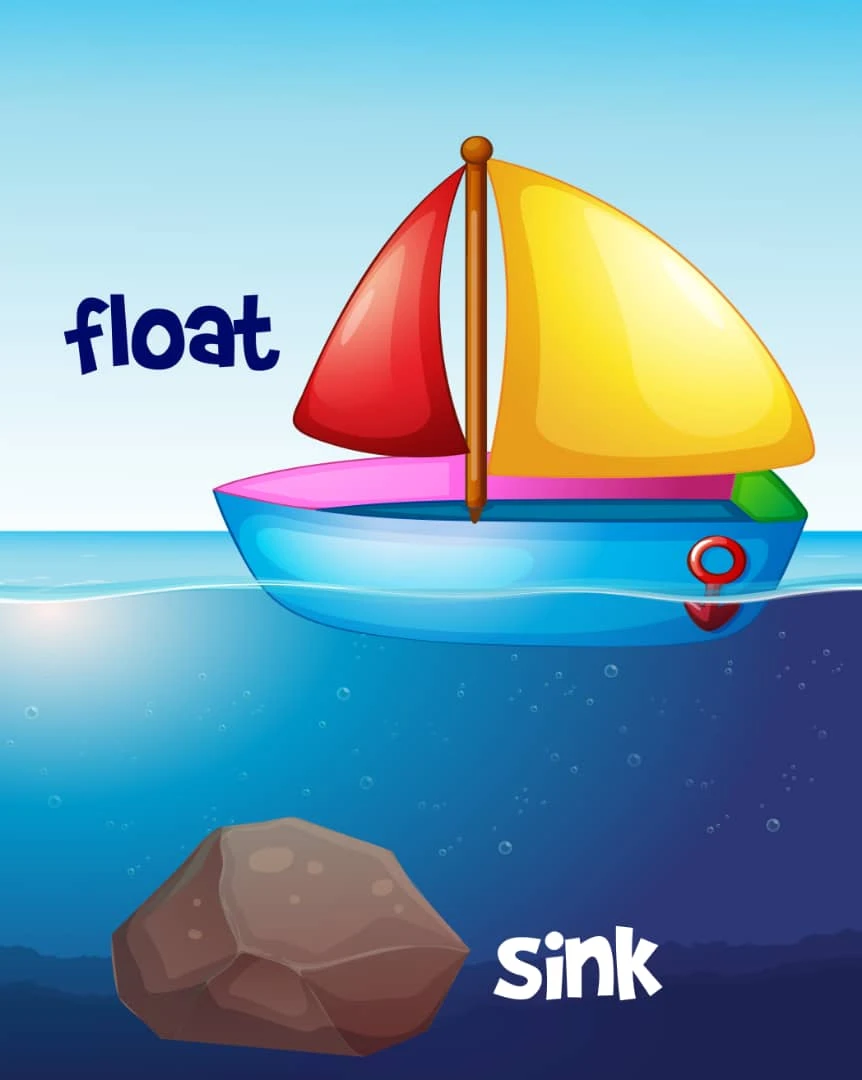
Items needed:
A large bowl or container
Objects that float in water (e.g. plastic toy, cork, paper, rubber ball)
Objects that sink in water (e.g. wooden block, metal spoon, sand, iron nails)
Step-by-step instructions:
Gather the needed items and add water to the bowl or container.
Discuss the science experiment with your kids. Explain what ”Sink” and ”Float” means, and that you will be testing different objects to see if they sink or float in water.
Starting with the first object, ask your kids to predict whether it will sink or float and why. Write down their prediction.
Slowly place the object in the water and observe what happens. Did it sink or float?
Repeat steps 3 and 4 for each object, encouraging your young kids to make predictions with reasons, and observe the outcomes.
After testing all the objects, discuss the results. Were their predictions correct? Why do they think some objects sank while others floated?
Explanation Of The Science Activity:
The Sink or Float experiment helps kids learn about how things behave in water. We can learn two important ideas: Density and Buoyancy from this simple science activity.
Density means how closely packed the tiny particles or molecules are inside an object. When something has high density, it means the molecules are packed tightly together. When something has low density, it means the molecules are spread out more.
Buoyancy is a special force that pushes things up when they are in the water. It helps decide if something will sink or float. If an object is less dense than the water, it will float because the buoyancy force pushes it up. But if an object is more dense than the water, it will sink because the buoyancy force is not enough to push it up.
Prompt them to think about why certain objects sink or float, and encourage them to come up with their own ideas and explanations. This will foster their curiosity, critical thinking skills, and understanding of scientific concepts in a fun and age-appropriate way.
2. Color Mixing Science Experiment
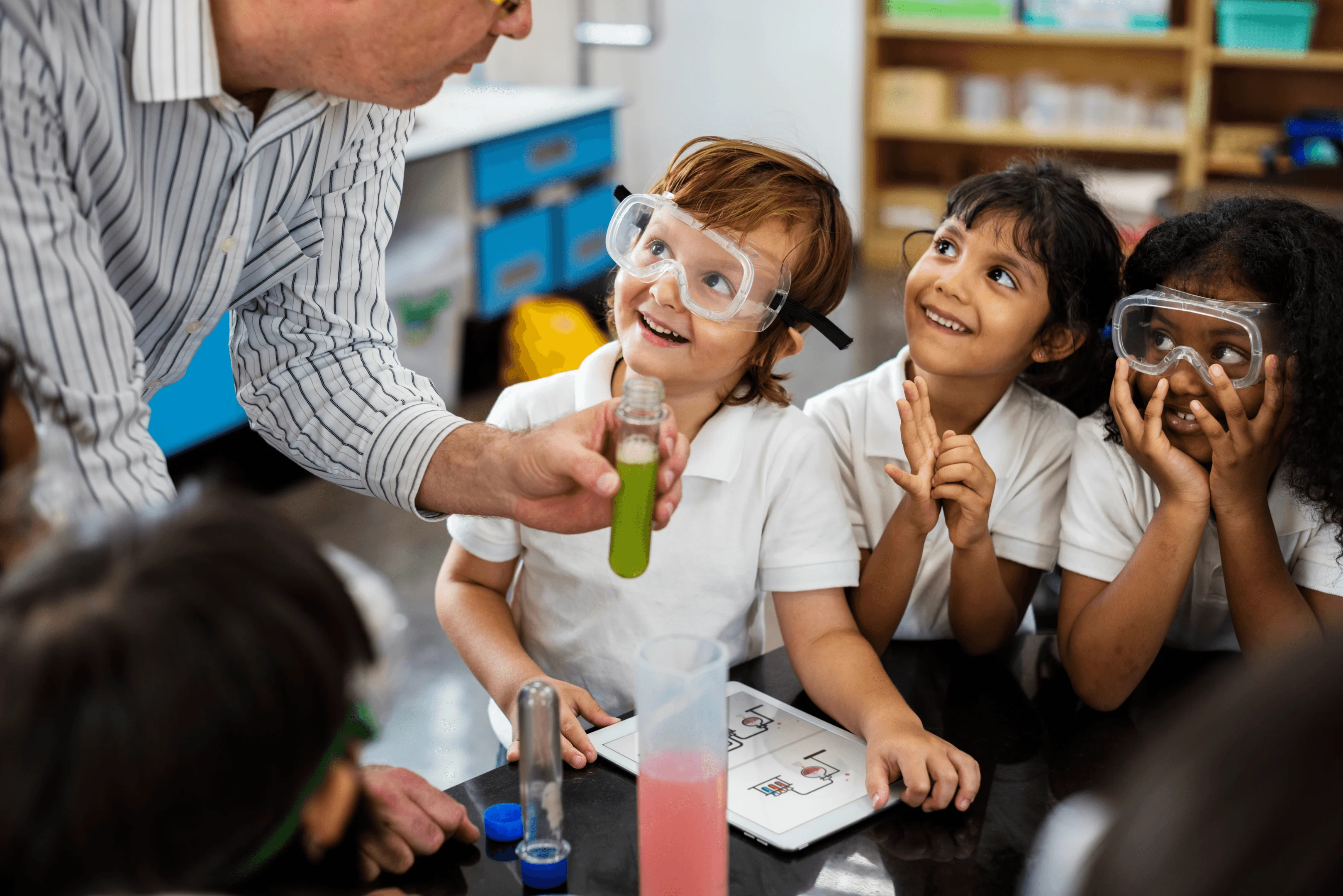
Items needed:
Three primary colors of liquid watercolors or food coloring (e.g., red, blue, yellow)
Transparent containers or cups for each color
White paper or paper plates for mixing colors
Paintbrushes or droppers for transferring colors
Step-by-step instructions:
Place each color in its own container or cup.
Discuss with your kids that they will be exploring how colors can be mixed to create new colors.
Select one color and ask them to predict what will happen when it is mixed with another color.
Use a paintbrush or dropper to transfer a small amount of the first color to the white paper or paper plate.
Repeat steps 3 and 4 with the second primary color and place it next to the first color on the paper or plate.
Observe and discuss what happens when the two colors mix. Did a new color form? What color is it?
Repeat steps 3 to 6 with the remaining combinations of colors (e.g., red and blue, blue and yellow).
After exploring all the combinations, engage in a discussion about the colors created. Help your kids identify the primary colors used to create each secondary color.
Explanation Of The Science Activity:
The Color Mixing experiment introduces kids to the scientific concepts of primary colors and color blending.
Primary colors (red, blue, and yellow) are colors that cannot be created by mixing other colors together.
When two of such colors are mixed, they create secondary colors. For example, mixing red and blue creates purple, mixing red and yellow creates orange, and mixing blue and yellow creates green.
This experiment not only engages their creativity but also helps them understand how different combinations result in different colors.
3. Magnetic Exploration Science Experiment
Items needed:
Various magnetic objects (e.g., magnets, paper clips, iron nails, small metal objects)
Non-magnetic objects (e.g., plastic toys, wooden blocks, cotton balls)
Tray or table for exploration
Step-by-step instructions:
Place the magnetic and non-magnetic objects on a tray or table.
Introduce the concept of magnets to your preschoolers. Explain that magnets are special objects that can attract certain materials.
Select a magnet and demonstrate how it attracts another magnetic object like a paperclip. Allow your toddler to observe this interaction.
Let your young ones experiment with attracting and picking up various items using the magnet.
Shift the focus to the non-magnetic objects, explaining that these do not respond to magnets in the same way.
Allow your kids to explore the non-magnetic objects, emphasizing the differences in their interactions with the magnet compared to the magnetic objects.
Explanation Of The Science Activity:
The Magnetic Exploration experiment helps kids learn about magnets and how they work.
Magnets are special objects that can attract or pull certain things towards them.
They have a special power called magnetism that makes things stick to them.
They also have special forces that either pull objects closer to them (this force is called attraction) or push objects away (this force is called repulsion).
Encourage your kids to describe their observations and ask questions about why some objects are attracted to the magnet while others are not.
Through this hands-on exploration, preschoolers develop an understanding of basic magnetism concepts and engage their curiosity and problem-solving skills.
4. Baking Soda and Vinegar Reaction
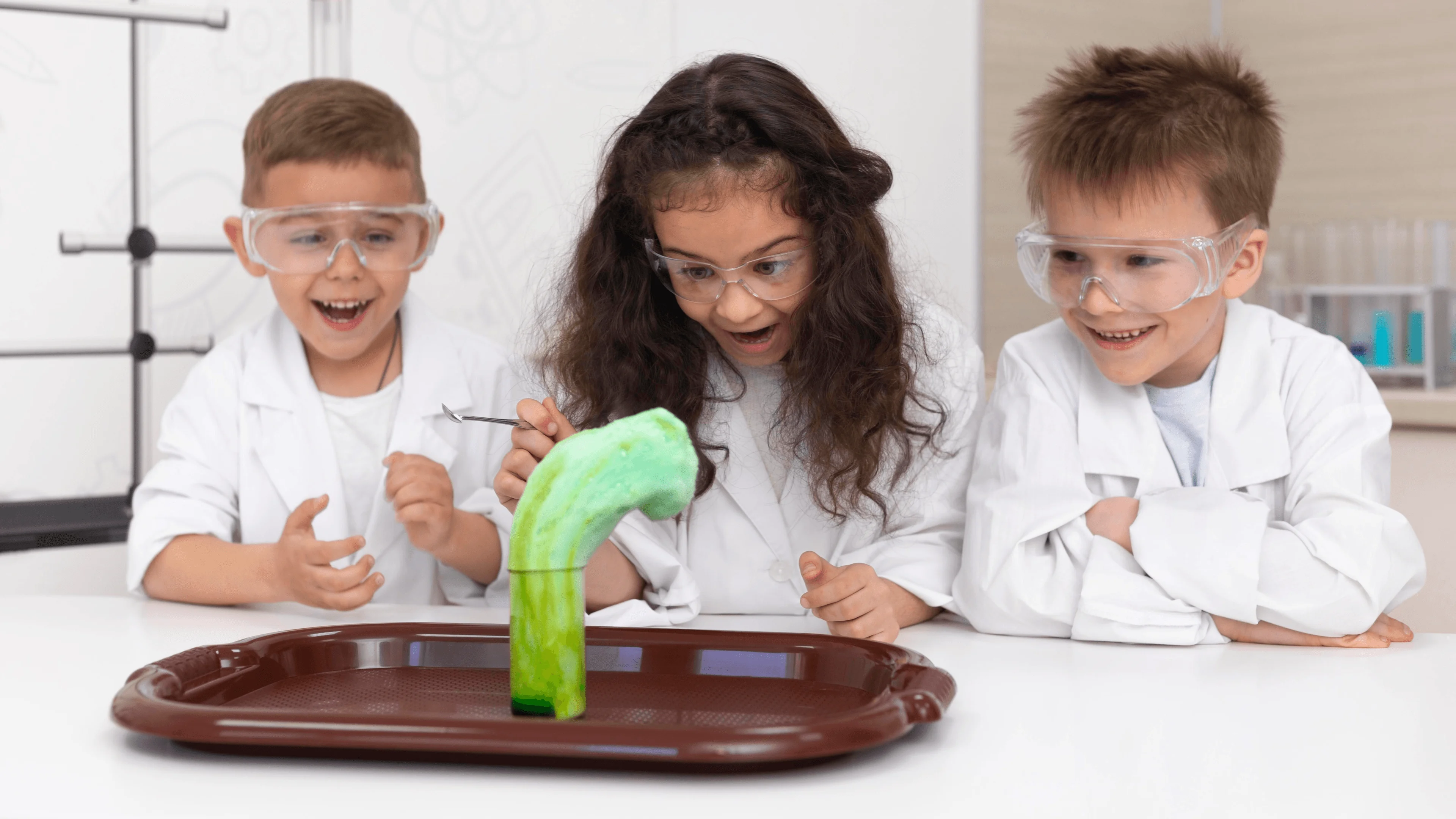
Items needed:
Baking soda
Vinegar
Small cups or containers
Tray
Food coloring and a spoon for mixing (optional)
Step-by-step instructions:
Place the cups or containers on the tray.
Introduce the materials to your toddler, explaining that you will be exploring a chemical reaction that occurs when both substances are combined.
In each cup or container, measure out a small amount of baking soda.
Add a few drops of food coloring to each cup to make the reaction more visually appealing for your young kids.
Pour a small amount of vinegar into a separate cup.
Slowly pour the vinegar into one of the cups with baking soda and observe the reaction. Discuss the changes that occur, such as the bubbles that form.
Repeat the process with the remaining cups, allowing your toddler to explore and mix different colors or amounts if desired.
Explanation Of The Science Activity:
This fun science experiment is a way for kids to learn about chemical reactions and what happens when certain things are mixed together.
When we mix the baking soda and vinegar, they react and make bubbles of carbon dioxide gas.
The bubbles look like what you see when you open a bottle of soda. It’s really exciting to watch!
This simple science experiment shows us that when we combine certain things, they can create something new with different properties.
Discuss with your kids that the bubbles are a result of the chemical changes taking place between the two ingredients, leading to the production of carbon dioxide gas.
Through these easy science experiments, kids engage in sensory exploration, make predictions, and learn about cause and effect.
These fun science activities spark their curiosity and provide a fun introduction to chemical reactions, paving the way for further scientific exploration.
How To Make The Most Of The Learning Experience
To achieve an inspiring and educating time with your kids, ensure to do the following:
Create a Curious Environment
Fill your environment with stimulating visuals. Let each little scientist smell, touch and feel during the science activities. Encourage them to ask questions, too.
Relate The Experiments To Everyday Life
Science experiments become even more fun and meaningful when we connect them to our everyday experiences, even beyond the classroom.
Point out different objects in their surroundings and ask your little ones whether they think each item would sink or float.
Ask them to mention objects at home that are attracted to magnets, such as metal objects or refrigerator magnets.
Encourage Problem-Solving And Critical Thinking
Ask open-ended questions that encourage your kids to think and explore different possibilities.
Instead of providing direct answers, prompt them to come up with their own solutions and explanations.
Let them know that it’s okay to make mistakes and that learning involves trial and error.
Finally, show enthusiasm and genuine interest in their discoveries, no matter how small or simple they may seem.
Conclusion
It is crucial for us as parents and teachers to actively participate in our kids’ scientific journey by providing opportunities for exploration, asking open-ended questions, and nurturing their curiosity.
Creating a safe and supportive environment that encourages even toddlers to ask questions, make observations, and think critically will enhance their learning experience.
Engaging toddlers in science experiments helps them develop a positive attitude towards science and instills a lifelong love for learning and discovery.
The long-term benefits of science experiments for toddlers include preparing children for future academic success and fostering a scientific mindset that can be applied to various aspects of their lives.
